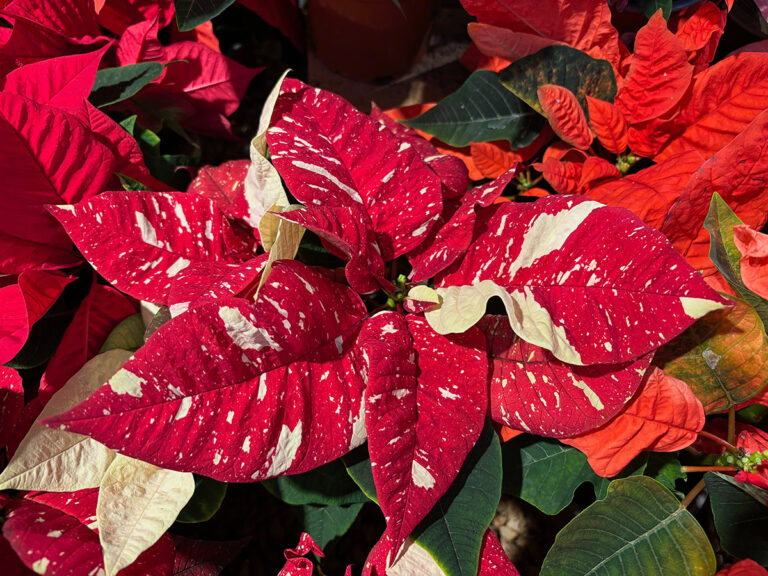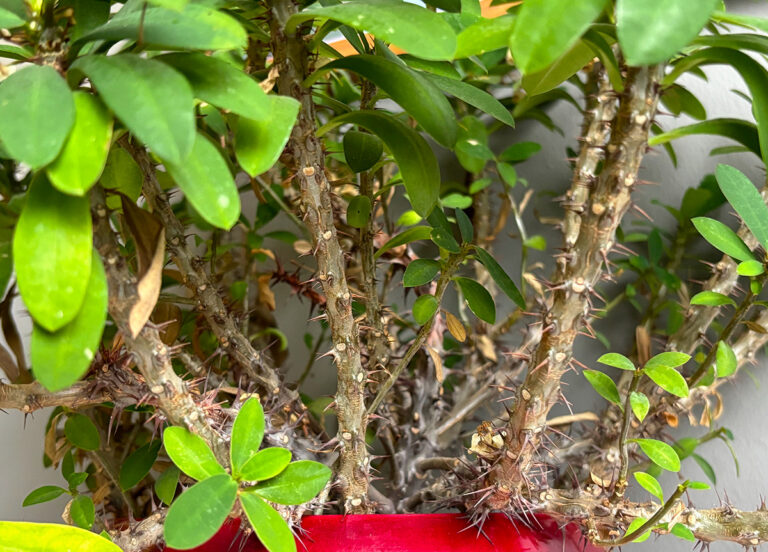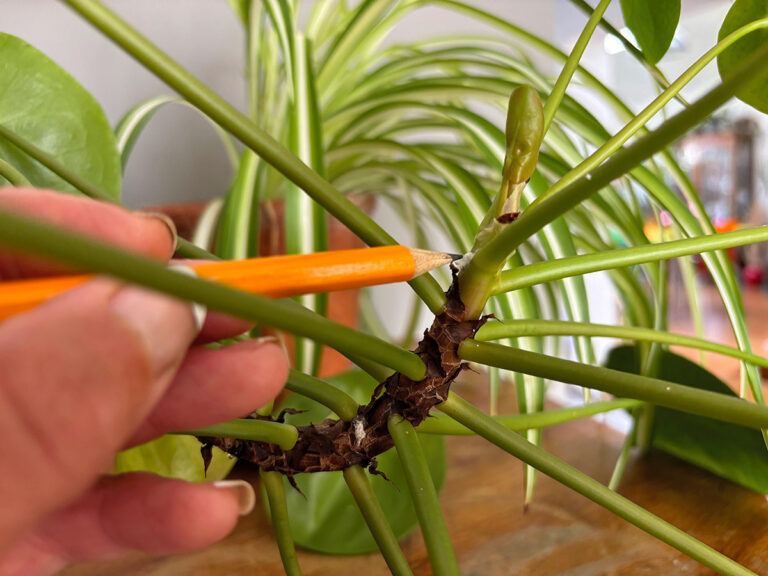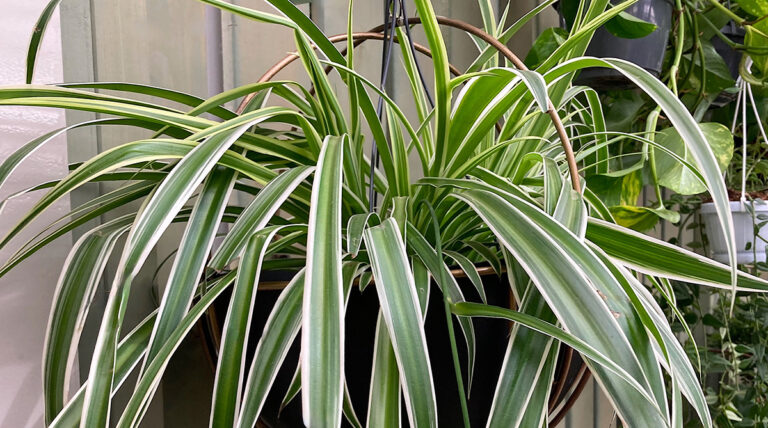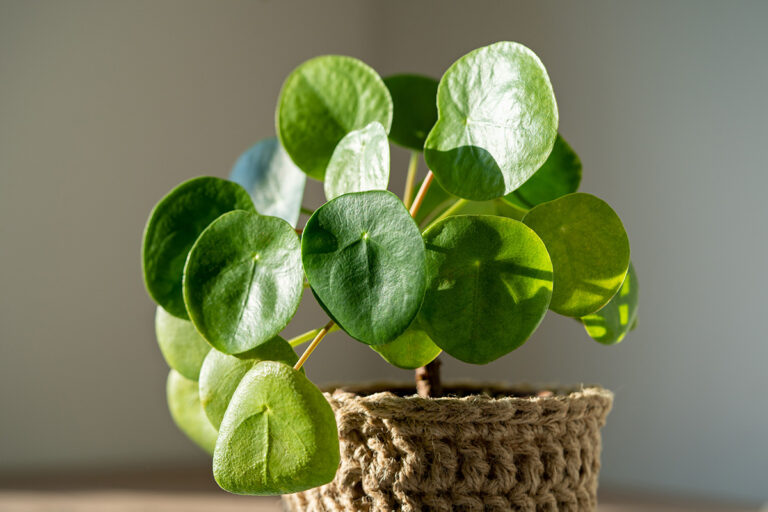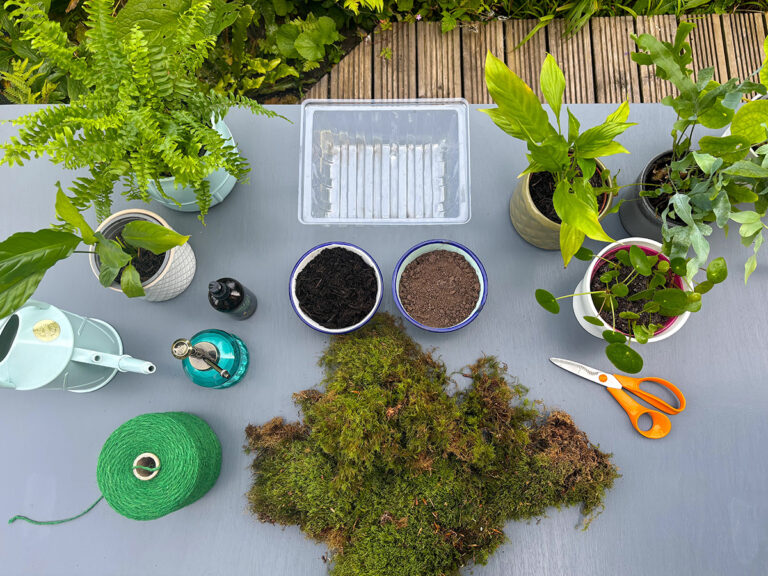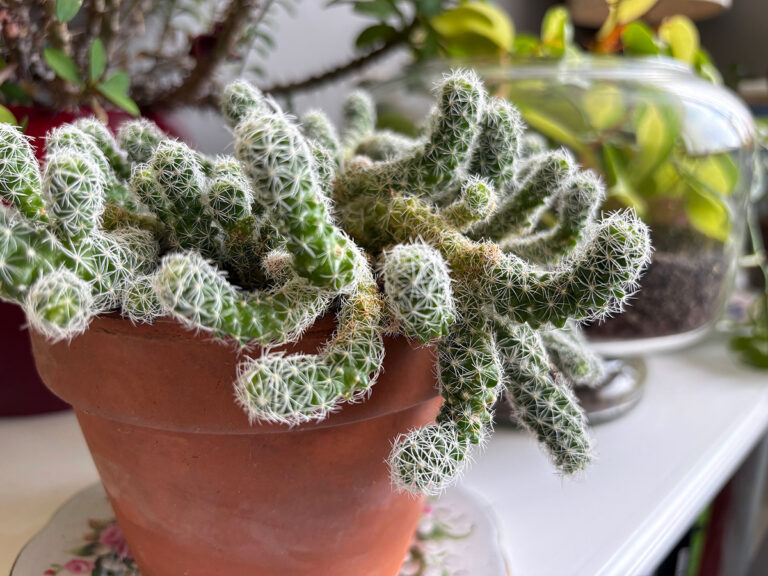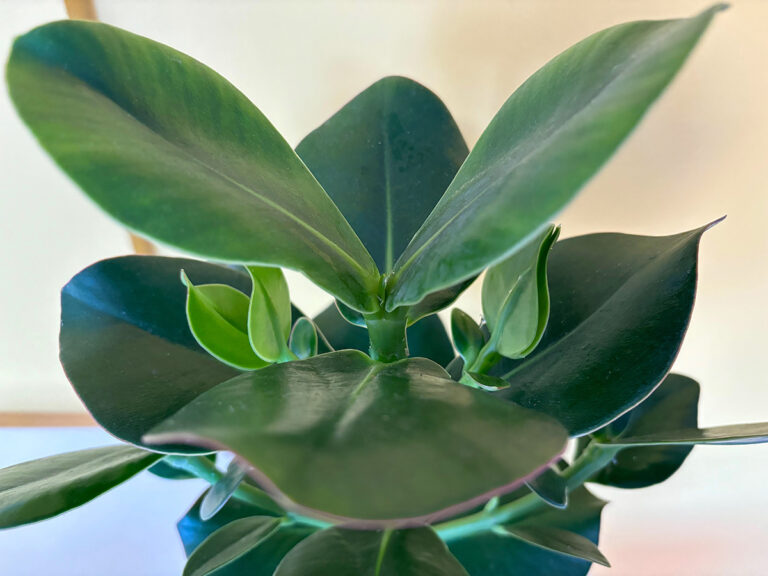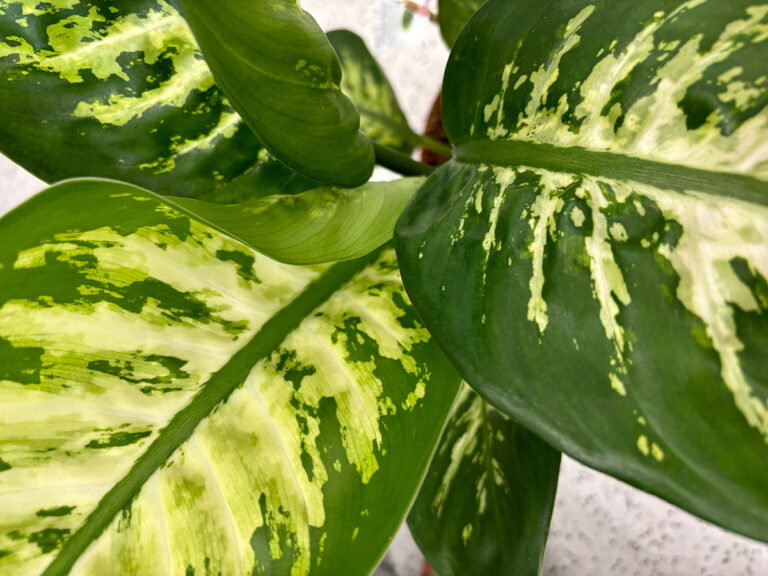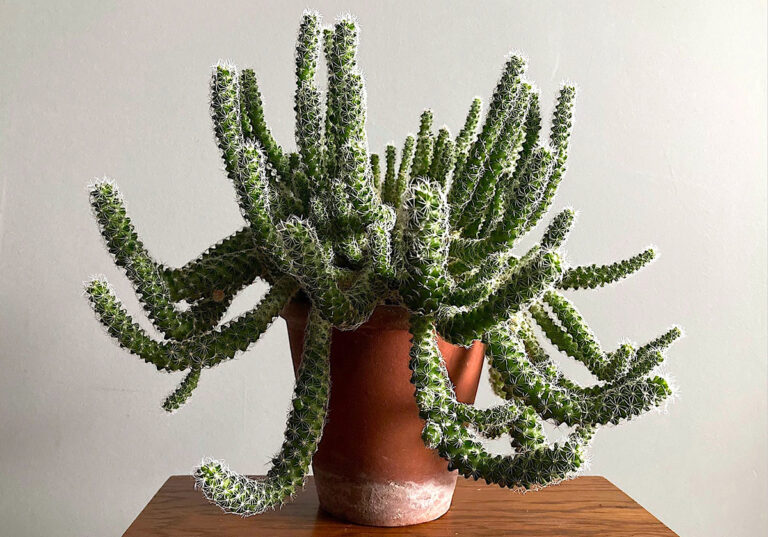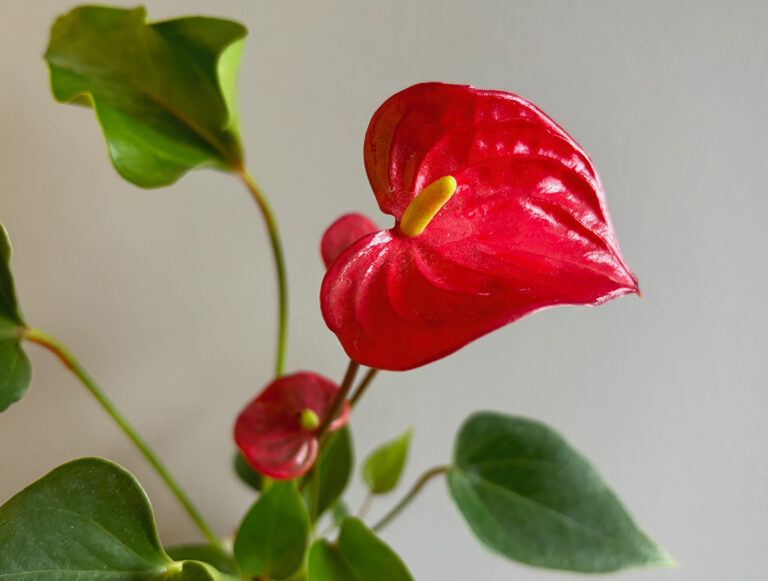Pilea peperomioides is an easy-to-grow succulent, which originates from the Yunnan Province in Southern China. This unusual plant is known by many names. The Chinese money plant has large glossy coin-like leaves which are believed to bring money, fortune and good luck to its owner but its waxy dark leaves also resemble flying saucers coining the name UFO plant, along with pancake, missionary and pass-it-on or friendship plant – why? We’ll come to that later.
Pilea require little maintenance so even for the most reluctant gardeners they make perfect companions, adding an oasis of calm to any bookshelf. So what do you need to do to help this perennial evergreen thrive?
Light
To keep your Pilea in tip top shape place it in a bright space but out of direct sunlight. Rotate regularly so all the leaves receive light; this will keep the plant growing evenly and avoid leaf scorch. Pilea become tall and leggy in low light.
Keep leaves dust free so the plant can obtain maximum light and easily photosynthesise. Clean leaves with a damp cloth or spray with Plantsmith Beautifying Leaf Shine Spray. The Plantsmith Leaf Shine gift set comes with a re-usable organic cotton cloth to wipe away grime and has the added bonus of cold-pressed oils to condition leaves and enhance natural shine; grapefruit extract provides anti-fungal protection.
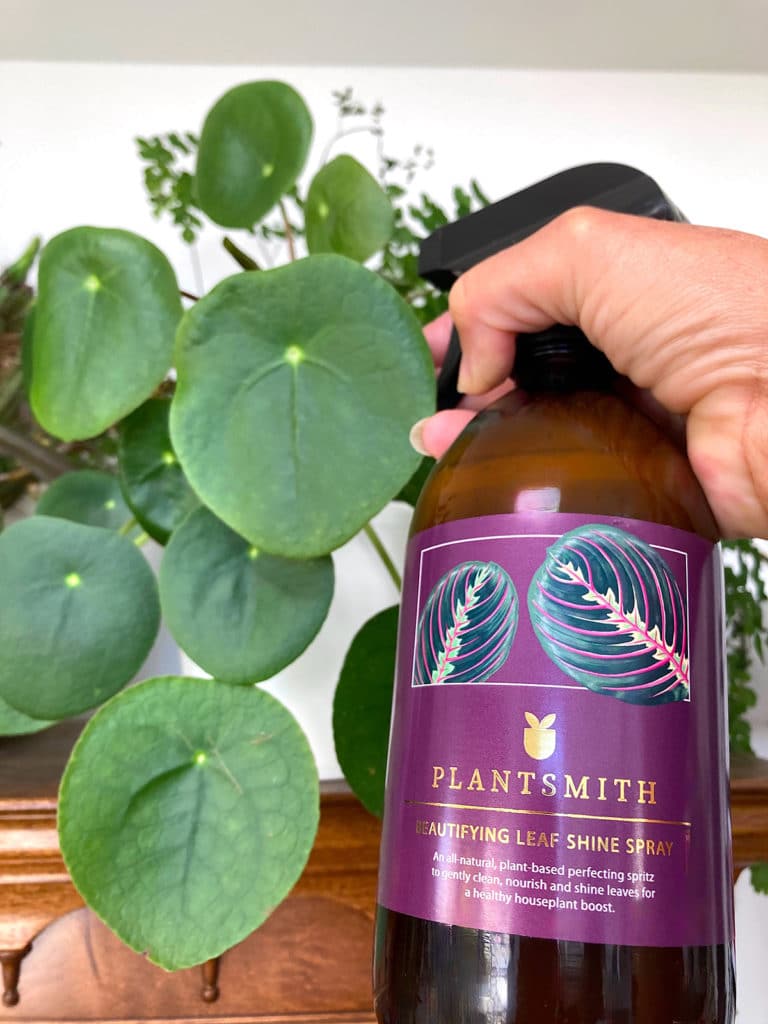
Temperature
Pilea thrive in the warm indoor temperatures of our homes, ideally between 16°C to 30°C (60°F to 86°F) but they will protest if temperatures deeply fluctuate or consistently drop to 10°C (50°F) or below.
Water
When to water? Pop your finger in the top of the soil, if damp leave, if dry water; either from the bottom so the roots can suck up the moisture or from the top and let water drain through the soil and out of the pot base. Better to give your plant an occasional good deep soak and let it dry out rather than lots of little frequent waterings. Reduce watering in autumn and winter.
If your pot sits on a saucer make sure drained water does not stay there for days as this can cause root rot. The most common error with pilea is overwatering so less is more, let your plant dry out between waterings and make sure your pot has drainage holes!
Mist leaves a couple of times a week; this is also a great way to keep surface dust to a minimum.
Ideally water with rainwater but if this is not available cool boiled water for 24 hours and harmful chemicals like chlorine and fluoride will have dissipated.
Soil
Use peat-free compost mixed with perlite for aeration and coconut coir or well-rotted leaf mould which is a great alternative to peat. Most importantly you want free-draining soil so the soil does not remain soggy. Repot every couple of years to refresh the compost.
Fertiliser
Feed once a month from spring to autumn. Plantsmith Fortifying Houseplant Tonic is a liquid professional houseplant food containing 13 essential nutrients including kelp which stimulates cell growth. Shake the bottle and mix 5 ml (approx. 4 pumps) into a litre of tepid rainwater and apply.
The quickest way to get food into your plant is in solution so your plant can directly absorb nutrients. Pot bound plants are totally reliant on us providing them with a balanced diet. Plantsmith feed contains essential nutrients such as iron, potassium and magnesium which will encourage healthy green leaves and promote flower growth.
Flowering
Pilea peperomioides will produce sprays of little pinky white flowers in spring or summer which bloom for around a month. These flowers have no scent as, in the wild, they do not rely on pollinators, pilea are self-sufficient. Some pilea are monoecious which means they have both male and female parts. Pollen bursts out into the air in search of the female part to pollinate.

If you want to try and make your plant bloom then place in a cooler room over winter and bring out to warmer temps in spring.
Propagation
You may have been wondering why Pilea peperomioides is also called the pass-it-on or friendship plant? If you own a Pilea it won’t be long before you are passing on pilea pups to friends and shortly after that absolutely anyone who will take them; they multiply with ease.
Plantlets naturally pop through the soil over time and develop into leafy offsets which can be sliced off the mother plant and potted on. These offsets will be covered in fine hair-like roots so make a hole in the soil with a pencil and insert the pup. Gently firm into soil, water and job done; you have a brand new baby plant potted on to share or keep.
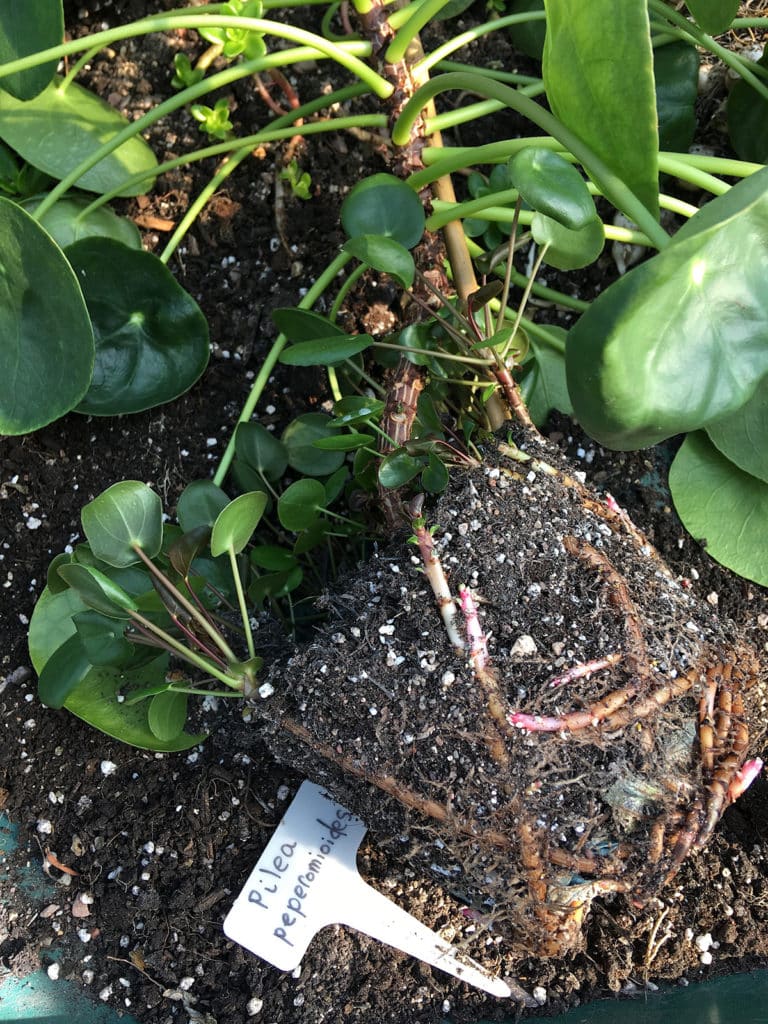
You can propagate from leaf cuttings or seed but there is little point as Pilea’s natural multiplication is so prolific you will be inundated but other forms of propagation are fun as an experiment or to quench curiosity.
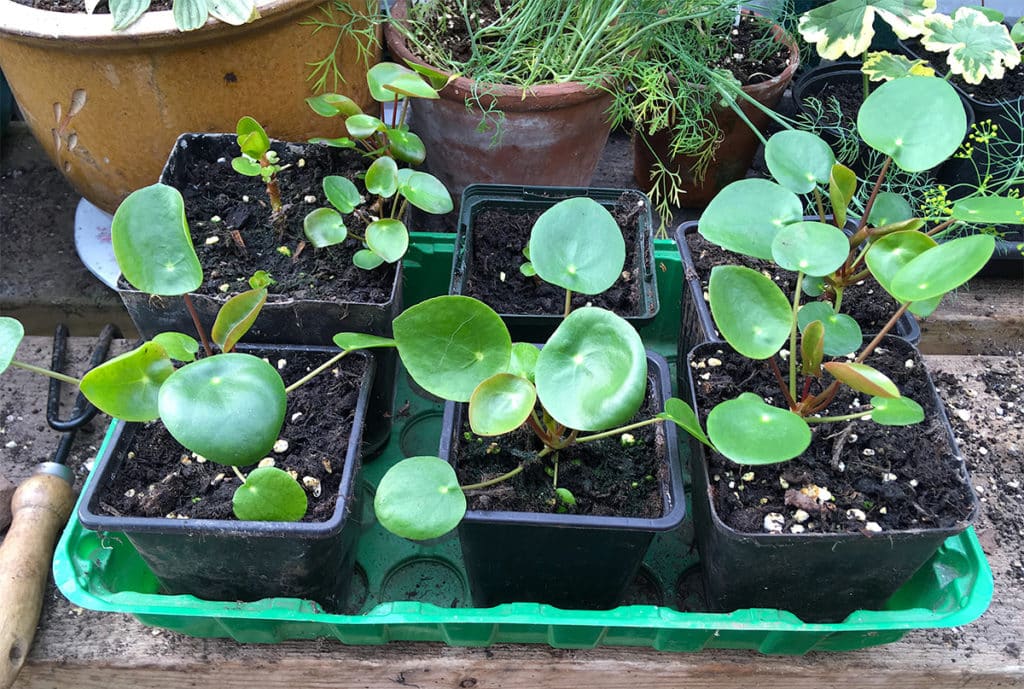
Pests
Pilea are not overly prone to pest infestations but look out for mealybugs, aphids and fungus gnats on the soil surface. If you get a problem then remove the plant from other houseplants to cut down spread, remove visible pests by hand then treat with Plantsmith Protecting Bug Control which is a blend of natural surfactants plus iron chelate, manganese chelate and magnesium. As well as protecting against common pests the formula is packed with nutrients and protects against mildew. Plants can be weakened by an attack so give them a natural boost with Plantsmith Protecting Bug Control.
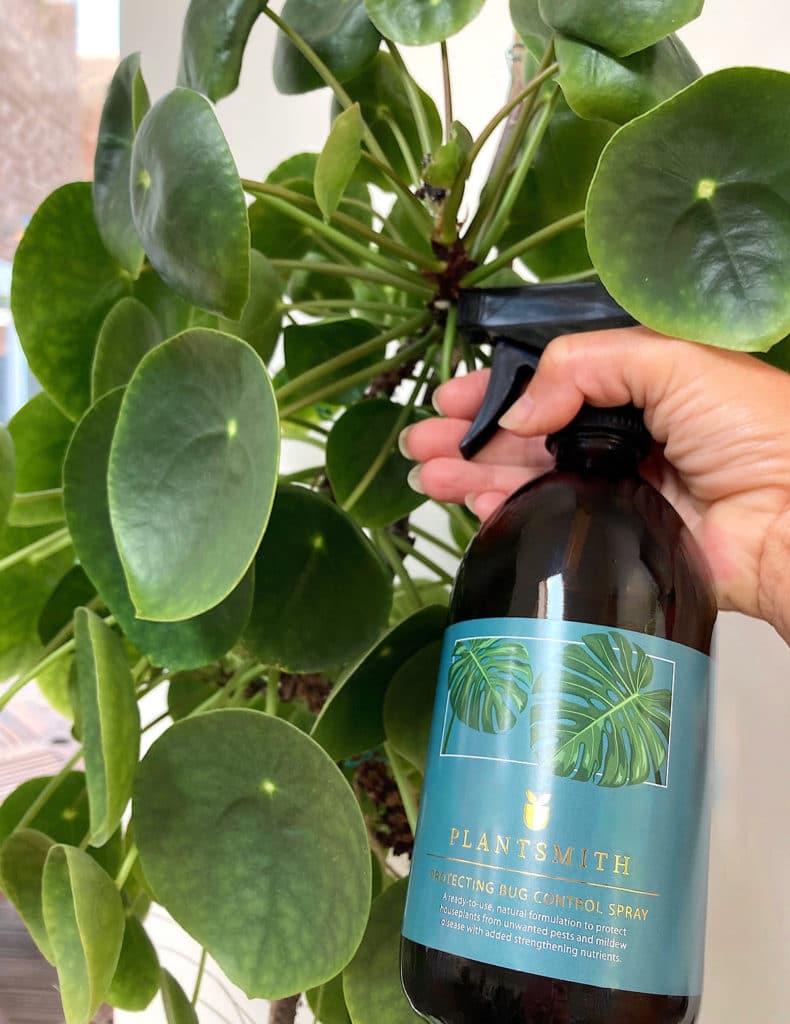
Problem Solver
Pilea leaf curl can be a sign of anything from lighting conditions being too bright or too dark, low temperature, poor drainage, nutrients or irregular watering so look at your plant and make changes. Move it to a different location, repot and change the soil, give it a good water and feed.
Over time pilea become leggy as their lower leaves naturally drop. If you end up with a straggly plant, replace with one of your cuttings.


